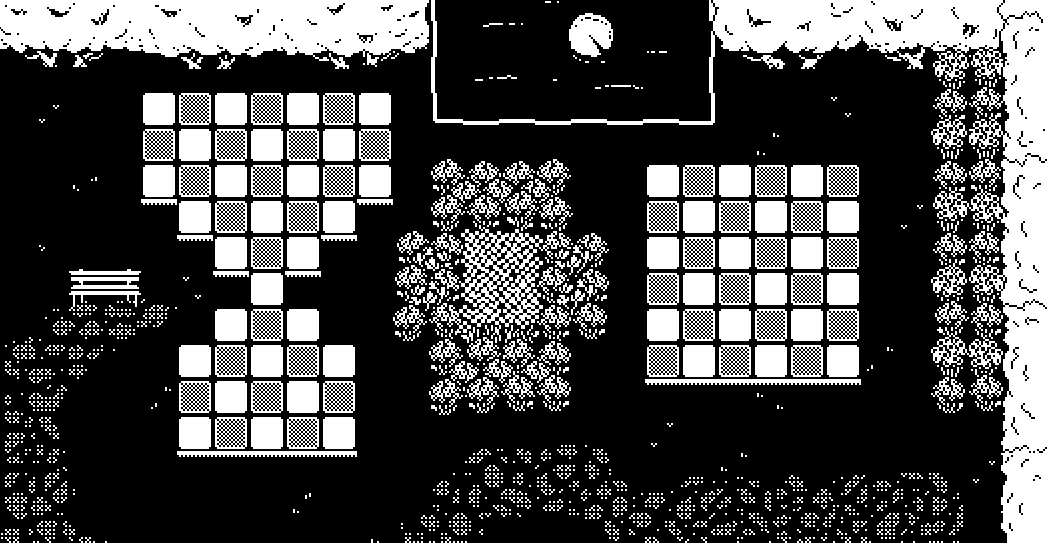Choosing the Playdate
- 📅
- 2023-07-23
I am developing Chester at the Park for the Playdate. Why? After all, I'm not a Lua or C developer, and I don't even have a Playdate myself -- I can't even test how the game works!
TLDR: The Playdate is great, but it comes with great limitations. Instead of seeing this as a burden, I think these limitations will help me finish this game, by finding the smallest version of the game that I want to make.
The Playdate
Let's recap. The Playdate is a retro handheld console with some novel features. Most exciting to me is the beautiful high-res, high contrast black and white screen. It looks great, and, doesn't it sound perfect for a game about chess?
The Playdate is also just fun to develop for. There's a Lua and a C SDK, which are fully featured, well-documented and easy to use. A simulator is provided for testing without access to the hardware. To top it off, the Playdate community is vibrant and fun.

There is much more to say about the Playdate -- I haven't even mentioned it's twist (hah) on input, the crank. If you hadn't heard of it yet, you should definitely check it out: https://play.date/.
However, the main reason I chose to develop for the Playdate isn't its features, but its limitations. Even though I love the screen, being just black and white present a big limitation for the art. And while I said the screen is high-res, it's only 400x240 pixels. To fit a whole puzzle, I will still have to significantly limit sprite sizes. This might seem like a burden, but it actually helps me focus on the things that matter most: finishing the game.
Finishing games
Chester at the Park isn't my first game project, but besides some very small arcade games, it's the first one I hope to actually finish. From these smaller games, I've learned that finishing a project is a skill on its own. A major component of this is the ability to say no, to keep the project from growing bigger and bigger, and to get just enough done to get the damn thing out the door.
For Chester, I have already cut a lot. There were plans for a castle, a story, side quests, exotic puzzle mechanics and much more. But I know that above all, I want to finish and release Chester. I want you to be able to play it. So I pared down the ideas to the core: a set of puzzles based on the rules of chess. I do still want the game to be appealing and look fun -- maybe like Snakebird or Stephen's Sausage Roll. That's why Chester is at the Park. I could have left out all the dressing and go with a minimalist style, but that just isn't the game I want to make.
I chose to develop for the Playdate because the Playdate is cool, because its black-and-white screen would fit a chess game perfectly, but above all, because I hope its limitations help me balance between making the game I want to make, and waffling on palettes, sprite sizes, or fancy visual effects.

Wrap up
Limitations aren't just a burden, but can breed creativity and add character to your projects. And the Playdate comes with a great set of limitations. I'm happy with the visual direction Chester is taking, and I would have never gone down this direction without these limits in color and resolution.
And the Playdate won't limit Chester. I'm very excited to bring this game to other platforms once it's finished. If you want to follow along, you can join the discord.